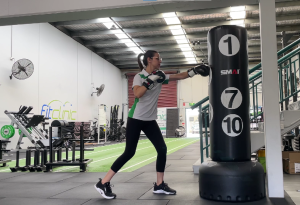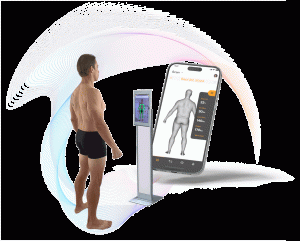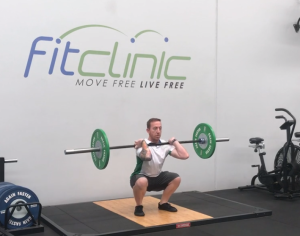Sustainable Weight loss
Sustainable Weight loss
How many times have you been approached by the ‘5 must-try diets in 2025?’. If anything like me, too many times!
The good thing about these diets is they allow you to actively engage in adopting a lifestyle change, but is it sustainable?
Fad, crash diets are NOT sustainable, although they might help with a very quick drop in weight. If you’re someone wanting to drop and keep the weight off it’s not the approach for you.
Hello 2025, the year you are going to live, breathe & enjoy all things sustainable weight loss (yes, enjoy, because it should be something celebrated!).
Sustainable weight loss (SWL) the catalyst is drive; the meaning is long term and the achievement is ‘the person I want to become and who I will be’. SWL is the concept where you change your eating and exercise habits to create a sustainable lifestyle change.
So how do you get started?
There are 6 steps involved. Let’s dive in.
Step 1. Calorie Intake
First you need to locate a suitable calorie calculator. You can find these online if you search calorie intake calculator or click here to use the one we recommended.
Collect the information you require to input into the calculator, this is gender, age, height, weight, body fat percentage etc.
Once inputted, it will spit out an ideal maintenance calorie intake for you. Preferably use a calculator with a macronutrient breakdown, you will have a detailed amount of macronutrients to consume based on your goal. This information will allow you to understand your macronutrient/calorie requirement.
Once you have received the value, calculate everything you ate over a full day with a macronutrient calculator. Initially, it will feel time-consuming, however, this process will help you understand what you consumed over a day. It’s best to use your consumption for a typical day and be honest.
Adopting this process will make the invisible visible, allowing you to receive a deeper understanding of the calories you’re consuming & very quickly you will be able to identify trends and high-calorie foods.
Compare this to the information you received from the calorie calculator. Does it match up? Is your daily calorie intake higher? Are you consuming the appropriate amount of macros based on your goals?
Now, before you say, I can’t do this for the rest of my life. You’re absolutely right. This isn’t a long-term sustainable habit, it helps make the invisible visible by educating you on which calories and macronutrients are in certain foods.
Ultimately, assisting you in refining your choices when you’re choosing foods to consume.
Once you’re consistently making those better choices, ditch the calculator, you won’t need it anymore. You are now equipped with the knowledge and confidence to keep the weight off.
Step 2. Focus on Whole, Nutrient-Dense Foods.
Now, I love, love, love food, for me, food has always been the centre of enjoying someone else’s company, where I can be creative with cooking and where I can be grateful for being healthy.
After all my background is Italian, so growing up in an Australian-Italian household, food was always plentiful & where we enjoyed each other’s company over the dinner table.
The beautiful thing, and something I have always been appreciative of is that I grew up in a household where my parents and grandparents always consumed whole, nutrient-dense foods.
From visiting my grandfather’s garden where he grew all kinds of vegetables and herbs, it created this feeling of health and sustainability that made you feel good and wholesome.
When we consume these types of foods, non-processed, earthy foods it helps our gut microbiota flourish and we feel good. These foods consist of lean proteins, fruits, vegetables, whole grains & healthy fats.

A collection of foods that help you feel fuller for longer, provides your body with the necessary nutrients that assist your organs to optimally function, leading to muscle building, fat burning & energy efficiency.
After all your body is an engine, if you feed it the necessary high-quality fuel, it will thrive. If you feed it low-quality, highly-processed ingredients, it won’t function optimally leading to many lifestyle-related conditions.
Step 3. Incorporate Strength Training & Cardiovascular Exercise
Strength Training
Something that I am incredibly grateful for in life is the ability to strength train, partly because I like to nerd out and apply the science to my own body. Yet more importantly I understand and appreciate the importance of strength training and its positive effects on the human body.
Strength training builds muscle mass and strength, so we can look great naked and lift heavy sh*t. When we’re talking about SWL though it plays a vital role in achieving and maintaining our ideal weight.
Have you ever heard a trainer tell you muscle weighs more than body fat? Well, it’s true, muscle is very dense. So we can’t always rely on the scale to give us a good indication of our health (more on this later).
The building blocks of SWL are to maximise the ability for muscle building and energy expenditure. With a high level of muscle mass, the body has greater energy efficiency.
Be patient with me as I nerd out and explain how high muscle mass and energy efficiency are related and required for SWL.
A measurement you may have heard of is the basal metabolic rate (BMR), this is the amount of energy your body requires at a minimum in a rested state to perform vital functions.
In most circumstances a high BMR is desired. The way we achieve a high BMR is to 1. Increase lean muscle and 2. consume the appropriate amount of nutrients to allow for muscle building. Our BMR is a measurement of our energy efficiency, also known as metabolism.
Skeletal muscles and our organs are the main energy engines in our bodies. They utilise the energy in the form of glucose and fats to allow for the contraction of muscles (to be able to move our limbs and perform body movements).
The greater amount of muscle mass we have, the higher your body’s efficiency in utilising the available energy stores. Therefore, leading to weight loss and maintaining your goal weight (or body fat %).
Cardiovascular Exercise
In addition, your programs should consist of a good mixture of strength and cardiovascular exercise. Performing aerobic exercises specifically target the heart, lungs & brain, vital organs that control and regulate weight. The higher your maximal oxygen consumption the better, contributing to your overall BMR value and energy efficiency.

Ideally, engaging in a minimum of 150 minutes per week of moderate-intensity exercise and a minimum of 3 strength training days per week will ensure you’re meeting the recommended guidelines of a healthy active Australian adult.
Step 4. Prioritise Sleep and Stress Management
Sleep and stress management two of the hardest factors to control when it comes to SWL. Unfortunately, there are many uncontrollable factors which may affect sleep and stress, all contributing to weight retention.
Disturbed sleeping patterns can lead to increased energy intake, and altered metabolic processes all contributing to an increase in weight. An Australian study investigating the effects of less than 7 hours sleep per night was associated with higher levels of obesity in middle-aged (45-65) males and females.
A commonly overlooked factor that affects weight regulation are elevated cortisol levels as a result of chronic stress. In the feedback loop, chronic stress may lead to poor sleep duration and quality, altering neuroendocrine hormones responsible for regulating weight.
Ideally, reducing stress through regularly practicing meditation, mind fullness & yoga. As well as receiving 7-9 hours of restful sleep per night can promote SWL.
Step 5. Consistency is key.
“Success isn’t always about greatness, it’s about consistency. Consistent hard work leads to success. Greatness will come” – Dwayne Johnson.
Consistency is defined as the quality of always behaving or performing in a similar way in order to achieve the desired outcome.
Essentially the compounding effect you will receive from the repetition of completing a behaviour will snowball, ultimately leading to a habit forming and goals achieved.
My clients are probably sick of my consistency (pun intended) in reminding them they need to prioritise consistency to achieve their goals.
On the days they don’t feel like training, I suggest they still do something, whether that’s a lower-intensity session, or going for a walk instead.
Ultimately, lack of consistency results in and opposite snowball effect of strength loss and weight gain leading to a further reduction in motivation.
It’s simple. Quality repetition. Equals desired results.
Step 6. Tracking Progress.
Lastly, the final step of the SWL journey is tracking, your workouts, your body composition, your food, your sleep, your heart rates, track everything.
Why? You need to make the invisible visible, if you don’t know your accurate calorie intake, how do you know you’re in a calorie deficit?
If you don’t write down the weight you did for squats last week, will you remember when you go to do squats again after a chaotic week at work?
If you don’t measure your body composition but just look at the scale, how do you know what percentage of muscle or fat is reflected in your total weight?

It just makes sense.
Tracking your progress is how you keep motivated with your goals and stay accountable. It allows you to measure your baseline and see how your body responds to a certain stimulus.
I’m not saying you need to record all these measures daily or even weekly, but keeping a record of the vitals will help you have a clear line of sight on your ultimate goal, that north star you’re working so hard towards achieving.
The SWL Checklist
My recommendation would be:
- Set your goals, break them down into shorter achievable small goals. Once you have established these you can understand how to measure them.
For weight-related goals, use a scale that measures body composition. This information will give you a well-rounded idea of your fat and muscle mass distribution.
If your goal is to achieve a 10% increase in a strength exercise. Measure the particular exercise, it can be 1, 5 or 10RM.
Ultimately, without those vital baseline measurements, how can you set SMART goals?
2. Now once you have established your goals, and you have obtained the specific measurements, the journey starts.
Work to implement the daily and weekly tasks that focus on your small goals. Celebrate your achievements and stay consistent.
3. Remeasure every week, monthly or quarterly then reassess as your priorities change.
4. Stay flexible and motivated. Seek help from professionals who can provide an individualised approach that’s suited to your unique needs.
The information provided in this article is considered general advice. For specific advice related to your individual circumstances, speak to your healthcare provider.
If you like what you’re hearing from us Fit Clinic, subscribe to our social media channels, YouTube, Facebook, and Instagram. You can find us at Fit Clinic AU.
Otherwise, pop over to our website and subscribe there fitclinic.com.au and hear more from us.

